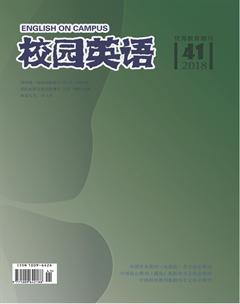General Analysis on The French Lieutenant’s Woman on Narrative Aspect
【Abstract】This paper aims at analyzing Fowles novel- The French Lieutenants Woman and discussing the narrative notions of beginning, the development and the end of the story in details according to the narrative theory.
【Key Words】Narrative; The French Lieutenants Woman; Beginning; Development of a Story; Ending
【作者簡介】张砚(1987-),女,汉族,四川泸州人,硕士研究生,讲师,四川大学锦城学院,研究方向:欧洲语言文化,翻译。
It is said in the book: An Introduction to Literature, Criticism and Theory (2004) that the simplest way to define narrative is as a series of events in a specific order– with a beginning, a middle and an end. This paper analyzes the novel of The French Lieutenants Woman on how the narrator gets the story started, developed and ended.
Firstly, as the book notes “one of the ways in which a literary text multiplies its beginning is through the deployment of pretexts – titles, subtitles, dedications, epigraphs, introductions, ‘notices and so on”(Bennet & Royle, p5), we can find the novel adopts one of the ways to start the story. It has pretexts, different quotation from various famous literature works at the beginning of each chapter. These quotations work as guidance or summary of each chapter. For example, Chapter Ones quotation is from Hardys ‘The Riddle. The poem says: “Stretching eyes west, over the sea, wind foul or fair, always stood she prospect-impressed solely out there did she gaze rest, never elsewhere Seemed charm to be”. The story begins as is described in the poem: Lyme Bay and “the pair who began to walk down the quay at Lyme Regis”(Fowles, p9). It means the beginning of each chapter, like that of Chapter One, goes smoothly after the quotation.
Another aspect of beginning is the beginning of the whole story. The story begins with an obscure description about the man and the woman walking down the quay with no explanation on their identities or intentions which arouses readers curiosity. It is only a vague introduction without enough information. In chapter 10, Charles and Sara met for the first time—the story starts— for the previous several chapters can be seen as the background information only.
The development of the story goes around the relationship between Charles and Sara and also involves several other events which makes it a complex and interesting story. “There is always more than one story” (Bennet & Royle, p5)—besides Charles and Saras love story, there are also stories of Charles and Ernestina, Charles heritage problem, Sam and Mary etc.. These related stories are distributed in different chapters, contributing to the whole development of the story.
The end of the novel is outstanding, for the author provided three different endings which is special and different from other literature works. It is quite interesting to discuss whether the novel has an open ending. “The end of a literary text is both obvious and not so obvious – in some senses closed, but in others opens (Bennet & Royle, p280).” Those three endings leaves readers lots of imagining space for fate of the main characters.
The first ending appears in Chapter 44, saying that Charles and Ernestina got married soon and leading a normal life, leaving Saras life unknown. However, as the author then writes at the beginning of Chapter 5, that “thoroughly traditional ending” was Charles imagination. So, I consider Chapter 44 is the end of the story that must exist under the social atmosphere and pressure. If the story ends in Chapter 44, I will doubt if the novel can be a popular one because this ending is too normal to create desire of reading.
The second ending is Charles ended the engagement with Ernestina and challenged to lose everything and tried to a new life with Sara. Finally Charles found Sara and saw himself as a father already. As a reader, I am satisfied with the happy ending for it is very likely that Charles and Sara will have a bright future although the ending is open.
The third ending is based on the second one with no confirmation of Charles as a father and problems between them were not settled. This ending is also open as it leaves the reunion of Charles and Sara with many questions for the readers to think over. Fowles sets three endings in a special way and makes this novel increasingly attractive and these endings contribute a lot to the success of the novel.
Altogether, I have discussed and analyzed the beginning, the middle and the ending of the novel in narrative perspective. The setting and plots of the story are successful and the narration is so attractive that arouses much of readers interests to follow the narrator to complete a satisfying reading process.
References:
[1]Bennet,Andrew&Royle;,Nicholas.An Introduction to Literature, Criticism and Theory. Third edition[J].United Kingdom:Henry Ling Limited,2004.
[2]Fowles,John.The French Lieutenants Woman[J].Great Britain: Vintage,2005.

